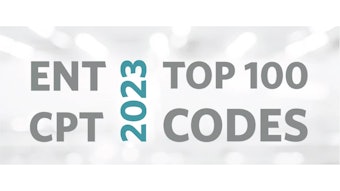Work-Life Integration: Awareness, Accountability, and Actions
A shift from work-life balance to work-life integration to create a culture that supports life outside of work.
Julie L. Wei, MD

- William O. Collins, MD, Professor and Chair, University of Florida
- Sonya Malekzadeh, MD, Professor and Residency Program Director, Georgetown University Medical Center
- Steven D. Pletcher, MD, Professor and Residency Program Director, UCSF
- Jennifer A. Villwock, MD, Associate Professor, University of Kansas Medical Center
Our goals were to define this newer term, share our own pearls and pitfalls, and inspire personal reflection with intentional actions to increase our daily experience of work-life integration. The subtopics examined challenges for otolaryngologists across various training and career stages, subspecialties, gender, race, ethnicity, and other characteristics. Finally, the panelists highlighted system and cultural changes necessary to help trainees and practicing otolaryngologists achieve greater “work-life integration.”
The term “work-life balance” is now considered outdated and has been replaced by the term “work-life integration,” as introduced by Berkeley’s Haas School of Business in recent years. The term “balance” evokes a binary opposition between work and life and frankly puts the onus on individuals to achieve or be perceived as responsible to somehow reach some imagined state. The traditional image of a scale showing work on one side and life on the other creates a sense of competition between the two elements.1 The reality for physicians, or anyone, is that our whole selves and the roles we represent in life are constant. Our personal life challenges show up with us to work, and our work challenges and the impact on our well-being, or lack of, come home with us after we leave the hospital.
Work-Life integration is an updated framework and approach that suggests synergies between all areas that define “life,” such as work, home/family, community, personal well-being, and health. This new term is even more applicable over almost three years of the COVID-19 pandemic that resulted in new realities for remote work leveraging technology and challenging traditional perspectives. Initially due to fear and mandates—but now recognizing benefits and cost savings, coupled by employee preferences across industries for better work schedule flexibility—work-life integration takes on new meaning. For many the pandemic created the loss of one or both senior parents. I am humbled by many accounts of physicians, particularly women, now becoming primary caretaker for one senior parent after losing another unexpectantly.
Numerous corporate companies and professional organizations recognize the critical importance of creating formal programs and resources to support employee/member wellness and work-life integration. Activities and incentives that align toward greater physical health and mental health include paid time off, subsidized or free childcare, work schedule flexibility, and recognizing contributions to the local community. These are all key differentiators essential to recruiting and retaining talent. In contrast, physicians and surgeons have been trained and have endured and accepted the unspoken culture of work-life imbalance for decades in service of patients. The percentage of U.S. physicians employed by hospitals, health systems, or corporate entities grew from 62.2% in January 2019 to 73.9% as of January 2022, according to a study sponsored by the Physicians Advocacy Institute. Such employment models are often associated with mandates on productivity targets.2
In November 2022, Linzer et al. published in JAMA Health Forum on trends in clinician burnout with associated mitigating and aggravating factors during the COVID-19 pandemic.3 The study surveyed 20,627 clinicians across 120 large U.S. healthcare organizations between February 2019 and December 2021 (67% physicians, 51% females, 66% white). Burnout rate increased from 49% in 2019 to 60% by end of 2021! Multivariable regressions found high stress as the greatest factor related to burnout, followed by poor values alignment and poor work control. Excessive home EHR use (pajama time), previously reported as the top factor for physician burnout, was found to be the least associated factor based on adjusted odds ratio.
Our Panel Presentation at the meeting in Philadelphia used an audience response system to assess attendee profiles, including stage in training and career, marital, and relationship status, perceived current work-life integration status, if attendees are living in alignment with their core values based on how they spend their time and energy. Attendees were also asked what they perceive as their biggest struggle related to achieving greater work-life integration. I shared a quote by Sadhguru, the yogi, mystic, and best-selling author, who stated, “There is no such thing as work-life balance—it is all life. The balance has to be within you.”
Panelists shared personal experiences of how priorities changed throughout training and career stages, especially as different stages of life began and ended, for example, transitioning from caring for children to caring for senior parents. Being a physician or a surgeon requires expectation of the unexpected, such as needing to navigate childcare, illness, bereavement, and other issues that cannot be delegated to others. Panelists noted how prioritizing being there for patients can compromise the ability to be present for these critical issues in our own personal lives. Several noted that, while it feels wrong to cancel clinics or ORs, patients often extend to us more grace than we do to ourselves and understand that we are human beings with real lives too.
The panel discussed a “coach” versus “mentor” versus “counselor,” and why each is not synonymous. Coaches are great at pointing out strengths and deficiencies, inspiring action, and providing performance-based feedback. Physicians often associate mentors as being faculty who have been a part of their clinical training or research career, often providing guidance and advice specific to academic advancement and career development. A counselor is typically someone whose sole responsibility is to help the individual reflect and gain insights and awareness to achieve greater positive mental health and stability and often provides critical support during times of circumstantial crises, acute or chronic mental health challenges.
One question posed to panelists was, “Is it easier to be at work than home?” Each panelist authentically shared the truth that, for many of us, the workplace and our work is where we perceive a far greater degree of control compared to our home life where we are no longer in any hierarchy among our loved ones. Our surgeon identity and years of living in the dynamic influence by our surgeon identity as far as being in charge, does not translate well at home. In fact, being open to feedback and generously listening to how our spouses, partners, and loved ones experience us is critical to letting others feel valued and committing the best versions of ourselves, albeit exhausted versions at the end of a long workday.
On the topic of “Self-Preservation: Hobbies, Interests, and How to Recharge,” panelists shared how each have experienced or became aware they were in high degree of burnout. Self-awareness of irritability, extreme fatigue, lack of joy during day-to-day work, as well as feedback from others are all indicators that require PAUSE and self-reflection. Each panelist shared specific activities and strategies developed over time to create more joy and positivity, especially with loved ones. One strategy involved intentionally engaging in activities that increase time and engagement with our most valued relationships and people whose interests are aligned with our own.
For example, Dr. Collins coached his son’s baseball team for years. Being part of his son’s baseball team and activities, including travel and tournaments, provided him with a source of joy and a means to recharge away from work.
Dr. Villwock loves gardening and making crafts with her daughter. She models authentic self-assessment and self-compassion, which she especially demonstrated during her medical leave after wrist surgery.
Dr. Malekzadeh emphasized boundary setting, strategic no’s, disconnecting from technology, prioritization on all fronts, and an ability not to “sweat the small stuff.” The latter is likely unnatural for physicians as we are trained to be hyper-focused on every detail and carry a perception of being in “control” in our workplace culture and society expectation of “perfectionism,” along with appropriate “zero harm” focus to optimize patient safety. Dr. Malekzadeh shared her intentionality in making time and being available for friends, family, and herself; she also uses mind-body medicine to equilibrate and be well.
Dr. Pletcher shared his perspective that our family is NOT our operating room staff. In the OR, team-members focus on improving the surgeon's efficiency and ensuring the surgeon has everything they need at their fingertips. At home, your kids are likely to cut you off in the kitchen, opening the fridge to grab some milk while preventing you from reaching your coffee mug. Don't bring your surgeon expectations to your family relationships. Other advice Dr. Pletcher shared is that sometimes we think we're more important and indispensable than we are.
During COVID, many of us have been forced to take time away from work. For the most part, we've been able to continue providing excellent patient care. Remember this next time a family emergency arises, and you're trying to decide whether to rearrange your schedule to be with your family or forego providing immediate family support to avoid impacting your work schedule.
As a consensus in approach, the panelists and I share the intentional advice to trainees to always prioritize themselves and their loved ones outside of work. This is just as critical as the emphasis and attention we all devote to the teaching and learning of our subspecialty.
On the topic of “Maintaining Relationships Outside of Work,” relationships included partners, spouses, friends, and those in one’s communities. Panelists shared some successes in creating time and space to have conversations with partners that are not focused on logistics of parenting. Dr. Collins and his physician wife—who also has immense leadership role—have always prioritized conversations by the fireside, listening to each other about their days. His podcast episode on dual-physician marriage on BackTable ENT has excellent pearls for those in dual-physician relationships.
Examples of multitasking to achieve health and self-care with limited time include exercising on a treadmill or bike while watching a movie or TV program of interest. I became emotional sharing the time I called home enthusiastically to tell my husband that I would be leaving in a few minutes and getting home early. He reminded me of the countless times I called but ended up coming home far later, always citing unexpected consult, conversations, phone calls, and emergencies. The reality is that our loved ones often endure our tardiness, not showing up as promised at certain times or to certain events, and we all end up feeling disappointed for the sake of serving colleagues and patients.
On the final topic, “System and Cultural Changes Necessary for Physicians to Achieve Work-Life Integration,” panelists shared that culture changes should be a top-down effort—leaders (department chairs, deans, CEOs, etc.) must embrace, model, support, and take actions to create the possibility of increased work-life integration for physicians. Physicians want to feel valued, appreciated, and acknowledged for their hard work and various forms of contributions to their divisions, departments, and practices. There remains significant work ahead to continue addressing inequity encompassing but not limited to age, disability status, economic circumstance, ethnicity, gender, race, religion, and sexual orientation to support those who are perceived as “other” and not the majority. Pay equity is not yet standardized based on gender or sex nor is the traditional academic framework and criteria for promotion. We must change the stigma and challenges associated with Family Medical Leave Act/paternity leave and ensure leaders all leverage separate realities when setting and measuring our productivity based on metrics. Contributions including community impact and research efforts should be valued with work-life integration in mind. Attitudes and actions necessary by healthcare systems, hospitals, and academic centers are critical to support physician career longevity and fulfillment.
As we start another new year, may all of us take micro and macro (big) actions aligned with our own values and create time, space, and habitual activities to achieve better physical, mental, and emotional health and work-life integration.





















